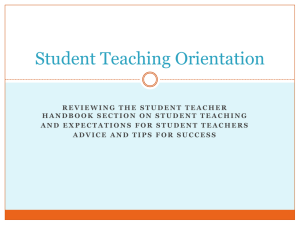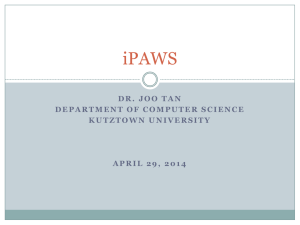Performance Management - DSA Staff
advertisement
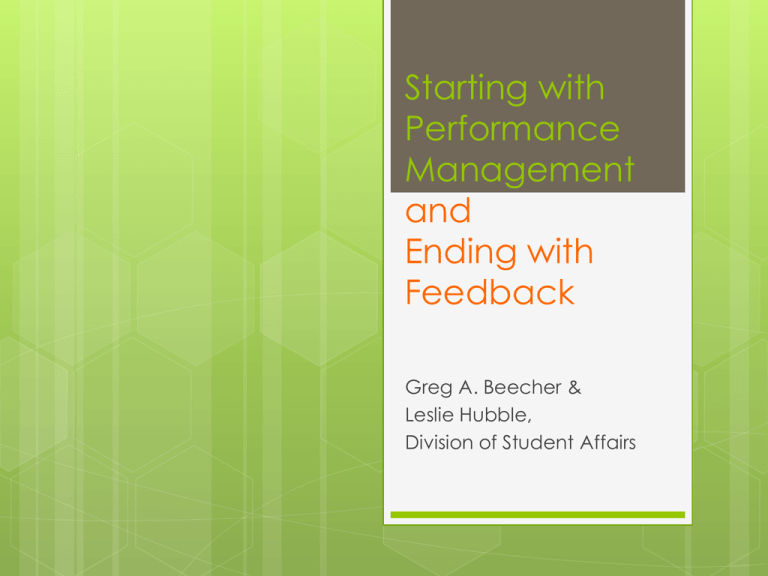
Starting with Performance Management and Ending with Feedback Greg A. Beecher & Leslie Hubble, Division of Student Affairs Performance Management Understanding the “Nuts and Bolts” What is Performance Management? Competency Model Leadership Development Team Audit Recognition Goal Setting Performance Management Performance Appraisal Behavioral Norm Coaching Performance Improvement Process 360* Feedback Performance Planning “Planning" refers to setting performance expectations and goals for individuals to channel their efforts toward achieving departmental and/or organizational objectives. It also includes the measures, or “metrics,” that will be used to determine whether expectations and goals are met. Effective performance planning requires clear communication of performance standards, goals and objectives. Involving employees in the planning process helps them to better understand their goals and responsibilities as they relate to the success of the organization. Performance planning is fundamental to effective management. Why do performance planning? Contributes to the success of the department/college/organization Helps employees understand the importance of their job and how it relates to the broader organizational objectives Builds the partnership between the supervisor & the employee Sets the stage for success… Identifies what the employee must do to be successful, including development activities Identifies what supervisor must do to help employee be successful Simplifies performance evaluation by creating a shared understanding of performance expectations....no "surprises" Classic Performance Management 1. 2. 3. 4. 5. 6. Write position description. Write a performance plan. Write a performance evaluation. Write goals for performance improvement. Update performance plan. Return to Step 3 and Repeat. SMARTER Goals 1. Specific 2. Measurable 3. Acceptable 4. Realistic 5. Timely 6. Extending capabilities 7. Rewarding Creating Goals with Metrics Example: Goal setting – Metrics for “Strong” Rating Competencies Universal Job specific Teamwork Safety Diversity Commitment Behaviors that contribute to an employee’s success in the job. Choose up to 5 competencies that are most relevant to the job. Supervisor Competencies Two universal required competencies for any person with supervisory responsibility who writes and conducts performance evaluations Career Development Supervisor’s Provide continuous feedback to employee Make training available Provide adequate resources Address programmatic or process inefficiencies Employee’s Responsibility Responsibility Attend trainings Identify needed resources Maintain dialog with supervisor Tools for Performance Planning Instructions for preparing Online Performance Plan Instructions for Writing a Position Description Instructions for Completing the Performance Plan (Form P112 & P112S) Anyone who starts on or after July 25th will need a performance plan for cycle. VT Performance Management Website: http://www.hr.vt.edu/compensation/perfmgt/in dex.html Tips and Tricks for Planning/Evaluation Process Undertake performance planning in PARTNERSHIP with the employee Your role in the meeting with the employee is to guide the discussion, NOT control the discussion The employee should end up doing most of the talking, since s/he is likely to know the job and his/her needs best Performance Evaluation Ratings Rating Definitions for Goals/Responsibilities Model Performance Strong Performance Developing Performance Unacceptable Performance May partially meet Performance is well below performance expectations Good, solid performance. an acceptable level in this Outstanding Performance but needs improvement. Fully meets expectations area. Steps to improve that considerably and Steps to improve and may, on occasion, performance in this area consistently exceeds performance in this area exceed expectations in must be clearly detailed in expectations. must be clearly detailed in this area. the Career Development the Career Development Plan section. Plan section. NOTE: A P141 (Acknowledgement of Extraordinary Contribution), is no longer needed for an overall rating of Model Performance. However, a P142 (Notice of Improvement Needed/Unsatisfactory Performance) is needed for an overall rating of Unacceptable Performance. Performance Planning/Evaluation Tool 1. Access via Hokie Team 2. 3. 4. https://banweb.banner.vt.edu/ssb/prod/twbk wbis.P_WWWLogin Click on Hokie Team Click on Performance Planning and Evaluation Tool Click on Performance Evaluation Menu Online Performance Plan/Evaluation Tool Performance Plan Statuses No plan exists Employee editing Supervisor created plan Employee complete Copied from previous year Copied from employee New version created Supervisor editing Employee reviewing Supervisor approved Reviewer reviewing Reviewer approved Employee approved Employee reviewed and approved a paper copy Employee refused to sign a paper copy Performance Evaluation Statuses No evaluation exists Employee editing self evaluation Supervisor created evaluation Employee self evaluation complete Supervisor editing Evaluation sent to reviewer Evaluation sent to budget authority Budget authority approves Senior management approved Supervisor released to employee Employee approved Employee reviewed and approved a paper copy Employee refused to sign a copy DSA Recognition Leave DSA has a recognition program that allows for 2 days of leave when employee either receives an overall “Excellent” rating as an AP Faculty employee or an overall “Model” rating as a staff employee. Evaluations need to be completed by designated deadline. AP Faculty evaluations are due by 7/31/2013. Please forward a listing of all of your ratings for AP Faculty to Leslie Hubble at lhubble@vt.edu after evaluation is complete. All AP Faculty evaluations are kept in departmental file. University deadline for Staff evaluations is 10/15/2013. Review DSA schedule for individual department deadline. Report for all staff evaluations will be pulled in October by Leslie Hubble to determine eligibility for recognition leave. FEEDBACK Using the “Nuts and Bolts” to Construct Performance Management that Works So, First … Answer These Questions The biggest problem with being a manager is to get your people to biggest problem with being an employee is to get my manager to understand . The . 10 Dimensions of The Feedback Instrument 1. 2. 3. 4. 5. 6. 7. 8. 9. 10. Have a plan. Be specific. Focus on behaviors. Time and place. Balanced feedback. Relevant feedback. Effective techniques. Effective style. Describe feelings. Listening skills. Dimensions #1 & 2 Have a plan. Give your feedback some preparatory thought and then deliver it with clear examples and have a solution in mind. Be specific. Know what actually happened and then use clear, understandable examples without having to guess. Dimensions #3 & 4 Focus on behaviors. Effective feedback doesn’t deal with personalities, attitudes, or labels. Time and place. This deals with how soon the feedback is given and where. Dimensions #5 & 6 Balanced feedback. This refers to the balance between giving supportive versus corrective feedback. Relevant feedback. When giving feedback, we shouldn’t lose our cool or overreact. Dimensions #7 & 8 Effective techniques. These include such things as getting to the point, using eye contact, and focusing on one major issue. Effective style. This refers to creating a personal approach of delivering feedback. Dimensions #9 & 10 Describe feelings. Our feelings are important and they can be powerful and have impact when coupled with a feedback message. Listening skills. This consists of encouraging the other person to express his or her opinions and then really hearing what is said. The Feedback Bucket What can fill a feedback bucket? What can empty a feedback bucket? Four types-of-feedback model. Supportive Feedback Corrective Feedback • Behavior Repetition • Behavior Change Feedback Bucket Abusive Feedback Insignificant Feedback • Contempt • Minimum Response Clues to empty-bucket behaviors Low production/performance. Can’t get along with others. Demonstrates low initiative. Body language signals. Methods to plug holes in a bucket. 1. 2. 3. 4. 5. Develop emotional maturity. Give quality feedback. Offer praise/recognition. Celebrate achievements. Delegate decision making. Developing respect and trust. Communication = Understanding = Respect = Trust Changing Behavior Traditional methods to change behavior. Five steps to correct behavior. Telling 1. Selling 2. Threatening 3. 4. 5. Try supportive feedback first. Use carefully guided questions. State that improvement is needed. Use appropriate discipline. Draw a line in the sand. Using assertive statements to correct behavior. 1. 2. 3. 4. 5. Describe the specific behavior. Describe the consequences of the behavior. Describe how you feel about the behavior. Describe why you feel that way. Describe what you need changed. Performance Feedback It’s an ongoing constructive process. Resources GOAL/QPC Competitive Advantage Consultants., Inc. (2001) Virginia Tech Human Resources www.managementhelp.org Tell Me How I’m Doing by Richard L. Williams (2005, AMACOM) Questions and Comments
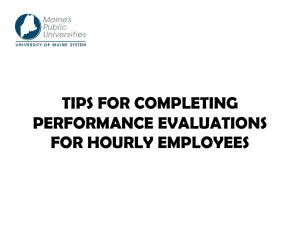
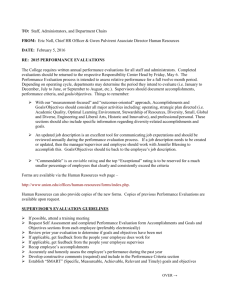
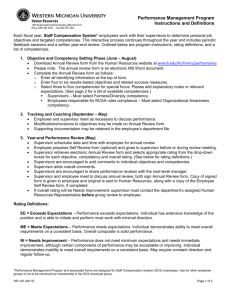
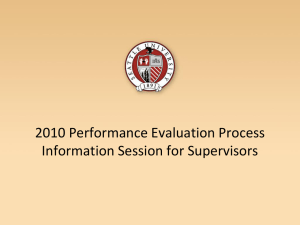

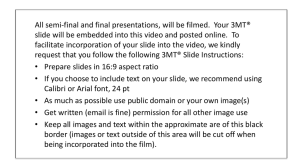
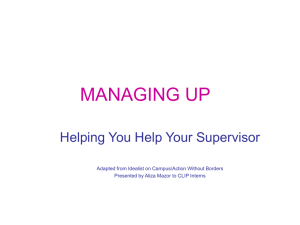

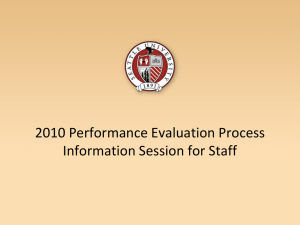
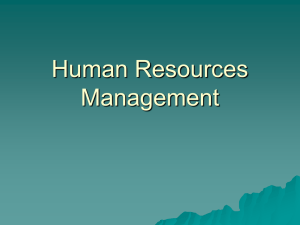

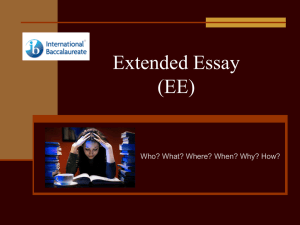
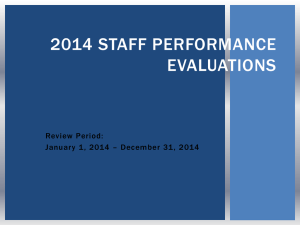
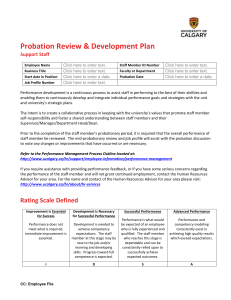


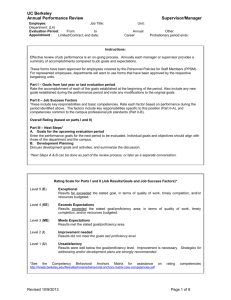

![First Aid Training : Bronze [Power Point]](http://s2.studylib.net/store/data/005424634_1-e0b0e5e602f7c1666ebc2e9ff3f4a1b5-300x300.png)
